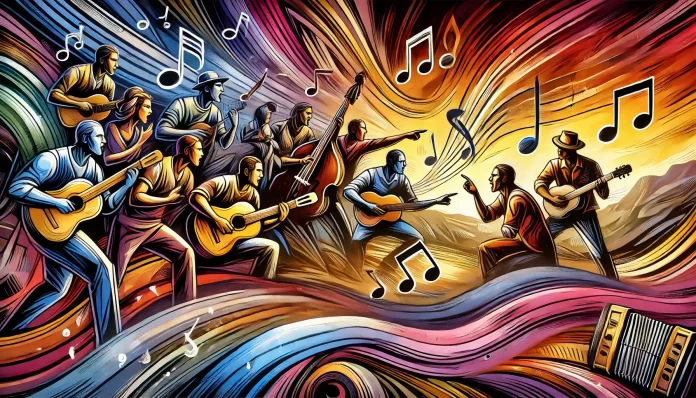
1. Notable Response Songs and Their Chart Success
- No Pigeons by Sporty Thievz (Response to TLC’s No Scrubs)
- After No Scrubs became a feminist anthem in the late ’90s, No Pigeons responded from a male perspective. While No Scrubs topped the charts and won multiple Grammy Awards, No Pigeons reached number 12 on the Billboard Hot 100, highlighting the power of response tracks to spark cultural debates between artists and fans alike.
- Emotional Impact: TLC’s song set the stage for self-respect and rejecting unhealthy relationships, while Sporty Thievz provided a satirical male rebuttal. The back-and-forth between these two tracks became a snapshot of late ’90s gender dynamics.
- Live Forever by Oasis (Response to Nirvana’s I Hate Myself and Want to Die)
- In response to Kurt Cobain’s dark introspection, Noel Gallagher wrote Live Forever as a celebration of resilience and optimism. Released in 1994, it became a top 10 hit in the UK, symbolizing the dichotomy between nihilism in grunge music and the Britpop optimism of Oasis.
- Emotional Impact: The emotional clash between these two songs—despair versus a zest for life—reflected broader musical and cultural movements during the ’90s.
- Sweet Home Alabama by Lynyrd Skynyrd (Response to Neil Young’s Southern Man)
- Skynyrd’s Southern rock anthem was a direct response to Neil Young’s critique of the South. The song not only charted successfully but became an enduring cultural staple, sparking discussions about regional identity and racial politics.
- Emotional Impact: By responding to Young’s sharp critique, Lynyrd Skynyrd created a song that became emblematic of Southern pride, solidifying its place in rock history.
2. Emotional Motivation: The Drive Behind Response Songs
The emotional intensity behind these songs plays a crucial role in their lasting appeal. Artists often write response songs as a way to process personal struggles, confront societal expectations, or shift the narrative around a shared experience.
- Miley Cyrus’ Flowers: Written in response to the regret expressed in Bruno Mars’ When I Was Your Man, Flowers flips the narrative, focusing on self-love and empowerment rather than longing and remorse.
- Oasis’ Live Forever: Noel Gallagher’s motivation was clear—he wanted to contrast Cobain’s darker message with one of hope and vitality, making a statement about perseverance in the face of despair.
3. Ethical and Intellectual Property Considerations
When creating response songs, artists must navigate the fine line between creative homage and potential intellectual property issues. While most response songs engage with the emotional themes of the original, they do not directly copy lyrics or melody, adhering to the principle of fair use.
- Fair Use and Legal Concerns: Artists like Miley Cyrus and Oasis managed to maintain their creative freedom while building on the thematic framework laid out by Bruno Mars and Kurt Cobain, respectively. Ethically, these artists respected the integrity of the original works by contributing their unique perspectives, rather than engaging in direct plagiarism.
4. Technicalities to Consider in Response Songs
In releasing response songs, artists need to consider several technical aspects:
- Licensing and Attribution: If a response song heavily incorporates parts of the original work, artists must ensure proper licensing. However, in most cases—such as Flowers—the response song creates a new narrative that builds on the theme rather than mimicking the composition.
- Cultural Reception and Context: Timing plays a pivotal role. A well-timed response, such as Miley’s release of Flowers amid public discussions of her past relationships, can amplify the song’s impact and resonate more deeply with audiences.
Conclusion: Celebrating Artistic Inspiration and Dialogue
At Music Industry Weekly, we applaud the ability of artists to engage in creative dialogues through response songs. These tracks not only highlight the interconnectedness of the music world but also allow artists to explore new emotional landscapes and reinterpret familiar narratives. In doing so, they foster a cultural exchange that continues to push the boundaries of artistic expression. As we see in the examples of Flowers, Live Forever, and Sweet Home Alabama, the conversation between artists transcends individual songs, creating a lasting legacy. These musical dialogues encourage listeners to engage with both sides of the narrative, fostering a deeper understanding of the emotional and cultural forces at play in each track.







